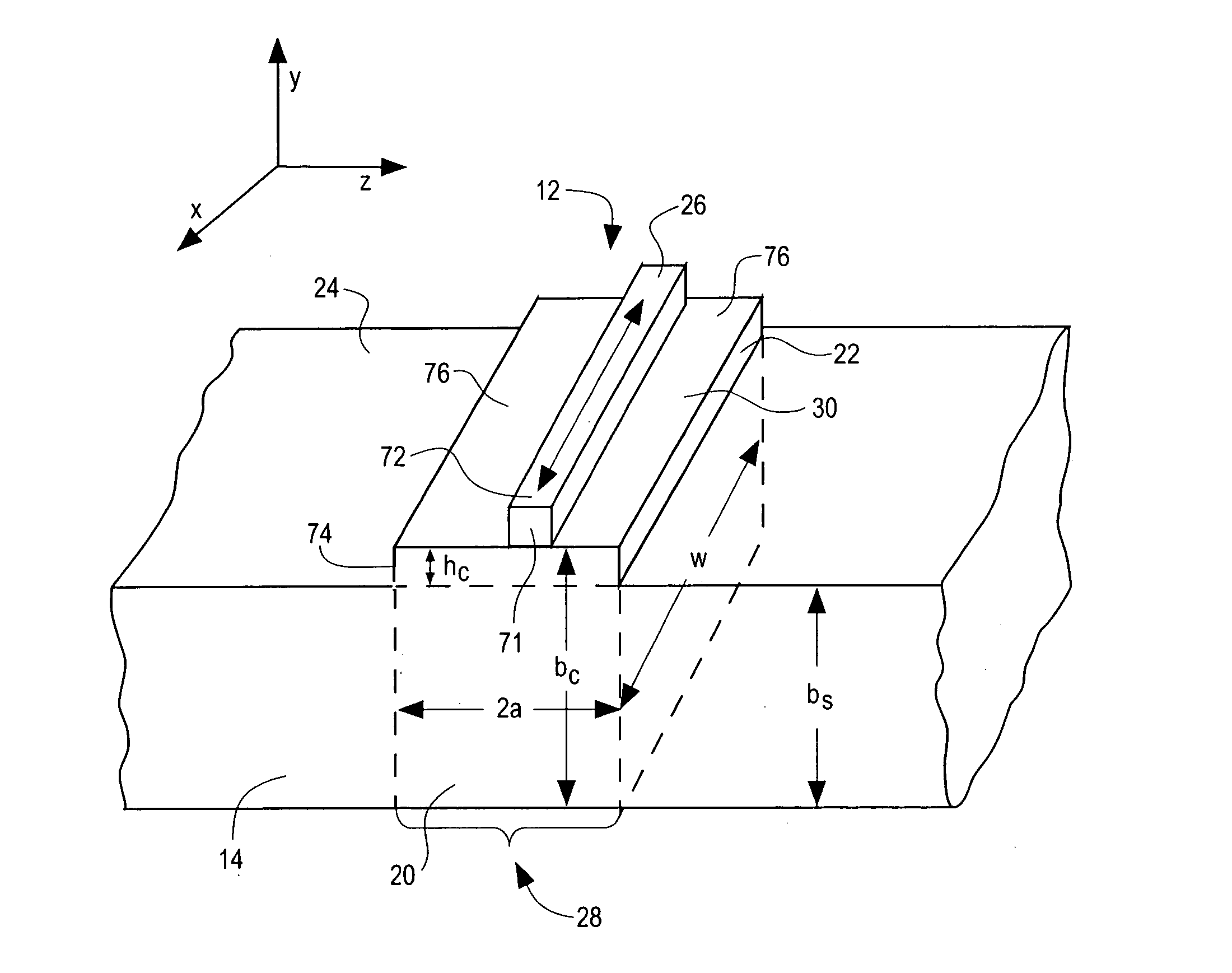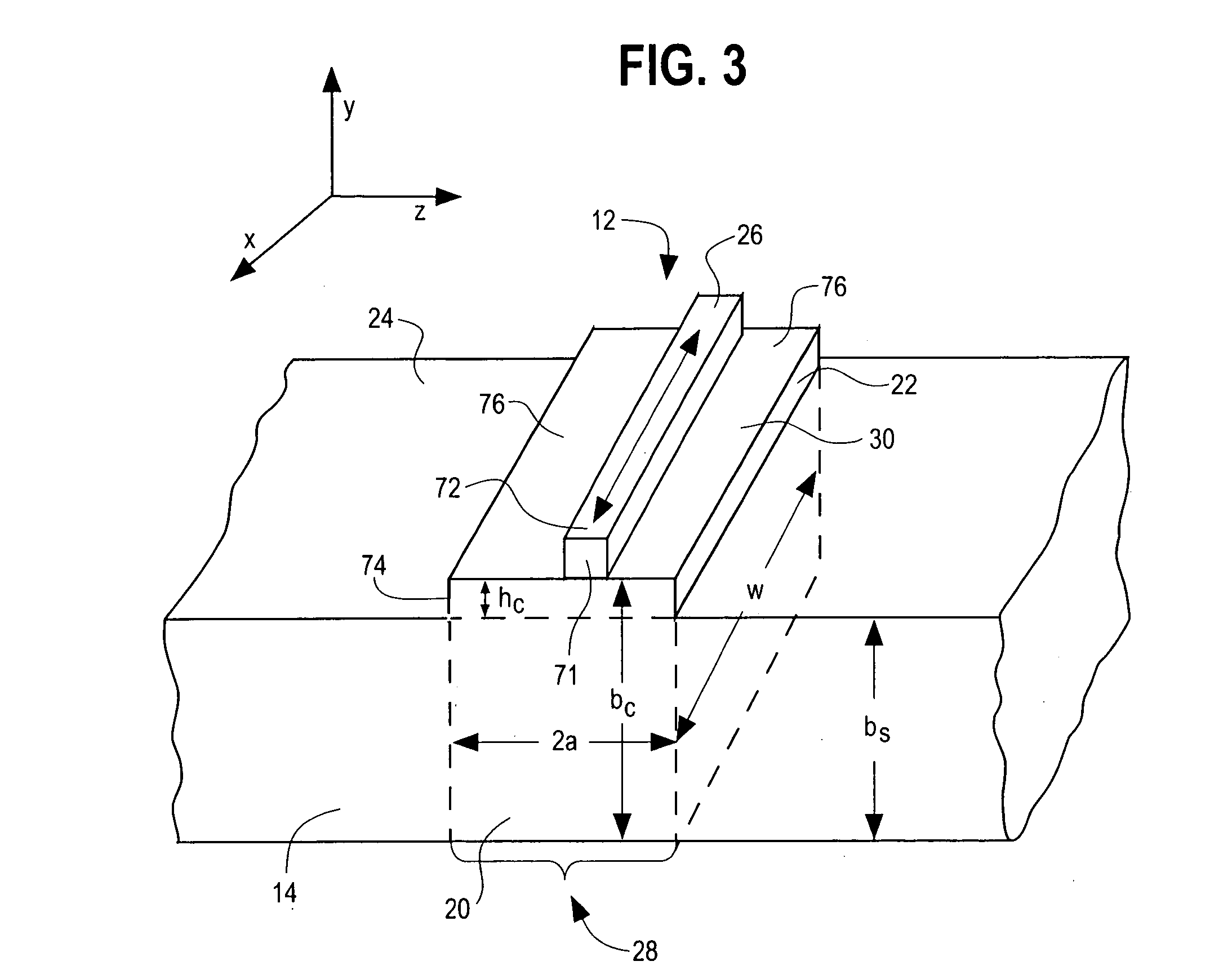Acoustic wave touch actuated switch
a touch-actuated switch and acoustic wave technology, applied in the direction of generator/motor, pulse technique, instruments, etc., can solve the problems of metals and the like not being used, the type of switch is expensive, and the piezoelectric element is relatively unprotected, and achieves the effect of simple circuitry
- Summary
- Abstract
- Description
- Claims
- Application Information
AI Technical Summary
Benefits of technology
Problems solved by technology
Method used
Image
Examples
Embodiment Construction
[0033]A touch panel 10 as shown in FIGS. 1 and 2 has a number of acoustic wave switches 12 in accordance with the present invention formed in the substrate 14 of the touch panel. Each acoustic wave switch 12 has respective indicia 16 formed on a top surface 18 of the panel. The indicia 16 identifies the position of a switch 12 and a switch actuation touch surface which are centrally located in the indicia 16. The indicia 16 can be formed in a number of different ways as described in detail below.
[0034]As shown in FIG. 2 and in more detail in FIG. 3, each acoustic wave switch 12 has an associated acoustic wave cavity 20 that extends through the thickness bs of the substrate 14. The acoustic wave cavity 20 is formed in the substrate 14 such that the mass per unit surface area of the acoustic wave cavity 20 is greater than the mass per unit surface area of the substrate adjacent the cavity. In one embodiment, the mass per unit area of the substrate in the switch region is increased to ...
PUM
 Login to View More
Login to View More Abstract
Description
Claims
Application Information
 Login to View More
Login to View More - R&D
- Intellectual Property
- Life Sciences
- Materials
- Tech Scout
- Unparalleled Data Quality
- Higher Quality Content
- 60% Fewer Hallucinations
Browse by: Latest US Patents, China's latest patents, Technical Efficacy Thesaurus, Application Domain, Technology Topic, Popular Technical Reports.
© 2025 PatSnap. All rights reserved.Legal|Privacy policy|Modern Slavery Act Transparency Statement|Sitemap|About US| Contact US: help@patsnap.com



